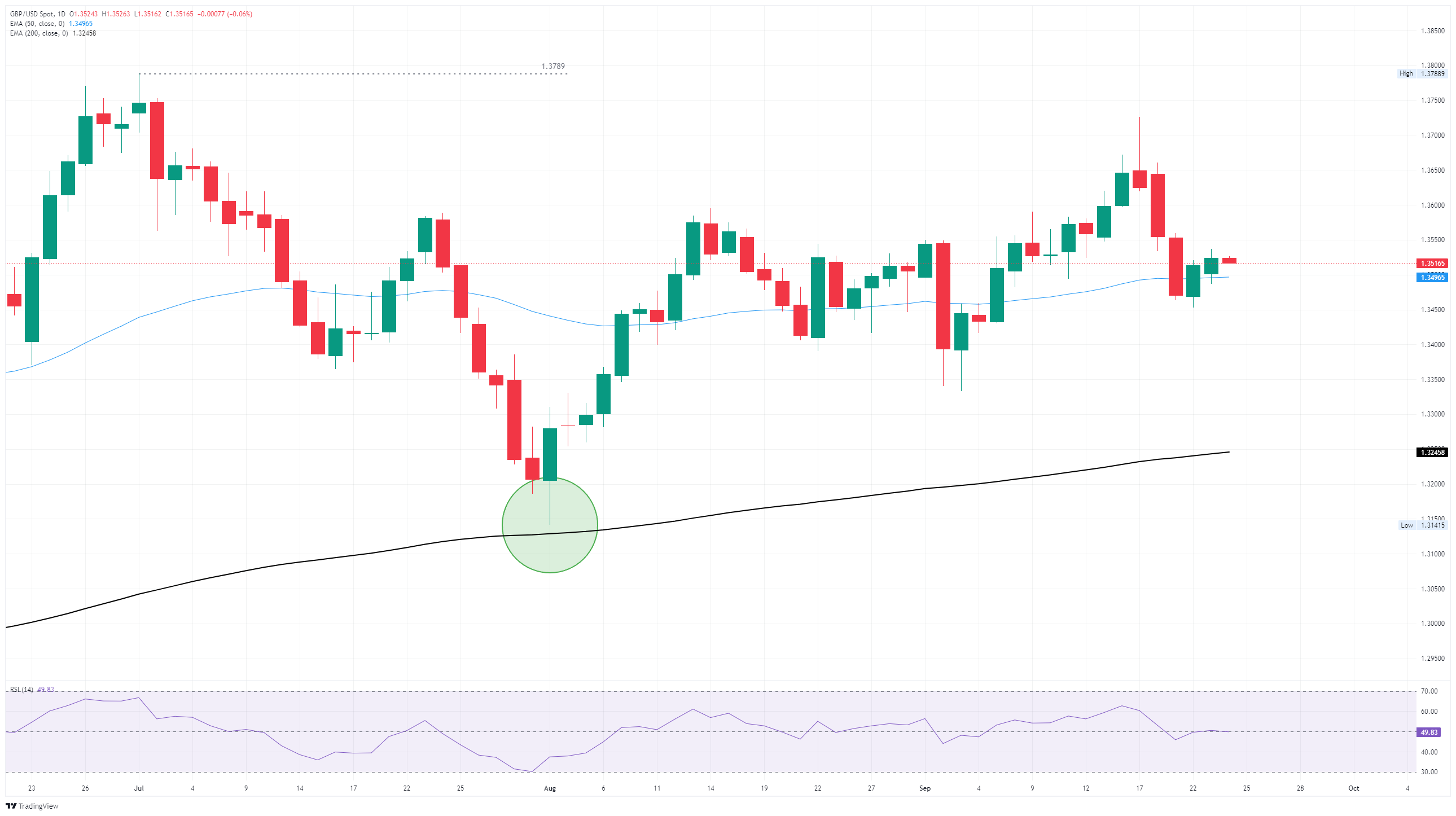GBP/USD extends rebound despite miss in UK PMIs

- GBP/USD slid into a second day of technical gains on Tuesday.
- Despite UK PMIs missing forecasts across the card, the Pound still found gains.
- Greenback traders are hesitating ahead of this week’s key US PCE inflation print.
GBP/USD extended into a second day of thin gains on Tuesday, rising from a messy technical bounce off the 50-day Exponential Moving Average (EMA) near 1.3500. UK Purchasing Managers Index (PMI) figures came in broadly lower than expected, but the Pound Sterling (GBP) still found gains after the US Dollar weakened across the board.
UK PMIs weakened much faster than expected in September, while US PMI figures for the same period also weakened, but stuck close to forecasts. General market sentiment remained on the high side, albeit shakily, and the UK side of the economic data docket is functionally wrapped up for the rest of the week.
On the US side, S&P Global Manufacturing PMI data from September fell to 52.0 from 53.0, as investors expected, while the Services PMI component slipped to the forecast of 53.9 from 54.5. American businesses that bothered to respond to the survey noted that overall output through September remained high, putting the US economy on pace to grow by around 2.2% on an annualized basis. However, the pace of hiring is also expected to slow in the coming months in the face of easing demand conditions, and businesses are growing uneasy about a still-growing overhang in inventory growth as signs of disappointing sales trends in the future continue to calcify.
The US’s latest round of Personal Consumption Expenditures Price Index (PCE) inflation is due on Friday, and investors will be looking to see if enough businesses are letting themselves get squeezed out of their own profit margins to avoid passing on too much of tariff costs directly onto consumers too quickly.
GBP/USD daily chart

Pound Sterling FAQs
The Pound Sterling (GBP) is the oldest currency in the world (886 AD) and the official currency of the United Kingdom. It is the fourth most traded unit for foreign exchange (FX) in the world, accounting for 12% of all transactions, averaging $630 billion a day, according to 2022 data. Its key trading pairs are GBP/USD, also known as ‘Cable’, which accounts for 11% of FX, GBP/JPY, or the ‘Dragon’ as it is known by traders (3%), and EUR/GBP (2%). The Pound Sterling is issued by the Bank of England (BoE).
The single most important factor influencing the value of the Pound Sterling is monetary policy decided by the Bank of England. The BoE bases its decisions on whether it has achieved its primary goal of “price stability” – a steady inflation rate of around 2%. Its primary tool for achieving this is the adjustment of interest rates. When inflation is too high, the BoE will try to rein it in by raising interest rates, making it more expensive for people and businesses to access credit. This is generally positive for GBP, as higher interest rates make the UK a more attractive place for global investors to park their money. When inflation falls too low it is a sign economic growth is slowing. In this scenario, the BoE will consider lowering interest rates to cheapen credit so businesses will borrow more to invest in growth-generating projects.
Data releases gauge the health of the economy and can impact the value of the Pound Sterling. Indicators such as GDP, Manufacturing and Services PMIs, and employment can all influence the direction of the GBP. A strong economy is good for Sterling. Not only does it attract more foreign investment but it may encourage the BoE to put up interest rates, which will directly strengthen GBP. Otherwise, if economic data is weak, the Pound Sterling is likely to fall.
Another significant data release for the Pound Sterling is the Trade Balance. This indicator measures the difference between what a country earns from its exports and what it spends on imports over a given period. If a country produces highly sought-after exports, its currency will benefit purely from the extra demand created from foreign buyers seeking to purchase these goods. Therefore, a positive net Trade Balance strengthens a currency and vice versa for a negative balance.







